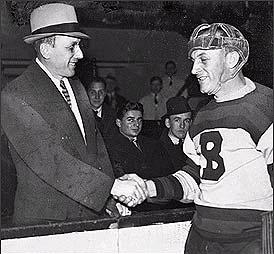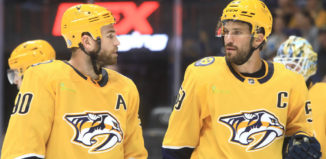NHL Takes Action Against Concussion Suit
(photo: Wiki from Hockey Hall of Fame website)
Everyone that knows hockey knows that helmets were not always worn on the ice. In fact, one of the first times a helmet had been recorded in hockey history was in 1933 when Boston Bruins‘ Eddie Shore checked Toronto‘s Ace Bailey so hard that his skull was fractured and he nearly died. Shore became so shaken up that he wore a helmet permanently through the rest of his career. Of course since then, helmets have become a must and now are always worn in the NHL so what is the deal with the concussion lawsuit that states the league did not provide proper head protection and information to their players about head injuries?
The lawsuit was originally filed in 2013 and claimed that the NHL downplayed the risk of traumatic head injuries, promoted the sport’s brutality and concealed information that could have protected the players from long-term damage. The NHL is fighting back the claims. They filed a motion to dismiss the suit with one brief for “dismissal arguing labor preemption grounds” and the other for “dismissal on statute of limitations and pleading failure grounds.”
The plantiffs are a plethora of former players including Dan LaCouture, Reed Larson, David Christian, Michael Peluso, Gary Leeman, and Bernie Nicholls. According to the case, these players are currently suffering from many things including depression, anxiety, nausea, memory loss, headaches and are at a bigger risk of developing some kind of head disorders like Alzheimer’s disease, dementia, ALS and many other ailments.
In one of the briefs for dismissal, the NHL talks about how there are agreements between the league and NHLPA on things regarding player safety and health, which includes the helmet requirement, rules about removals and returns to games when injured, neuropsychological tests on players, rules on body checking, fighting and disciplinary actions.
In the second brief, the league cites certain statutes of limitations that prevent the plantiffs from getting compensation and says the claim is “untimely.” The easiest way to put it is overall, the players should have known what they were getting themselves into from the get go.
The time between the start of the case to now already shows that it is not going to be an easy process to figure out who is truly right. In the end though, anyone and everyone knows that player safety is more important than the game itself and should be the biggest priority to everyone involved.














